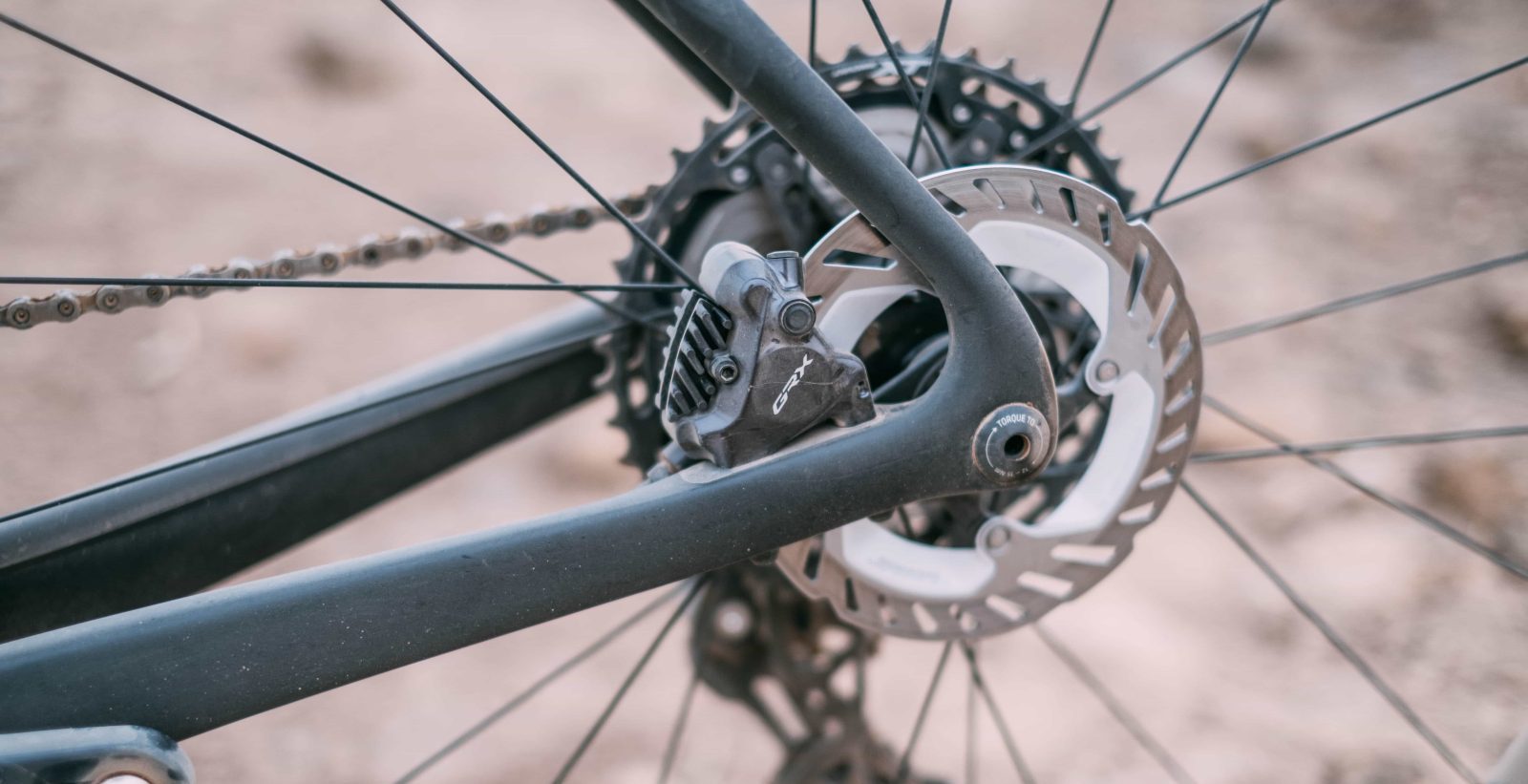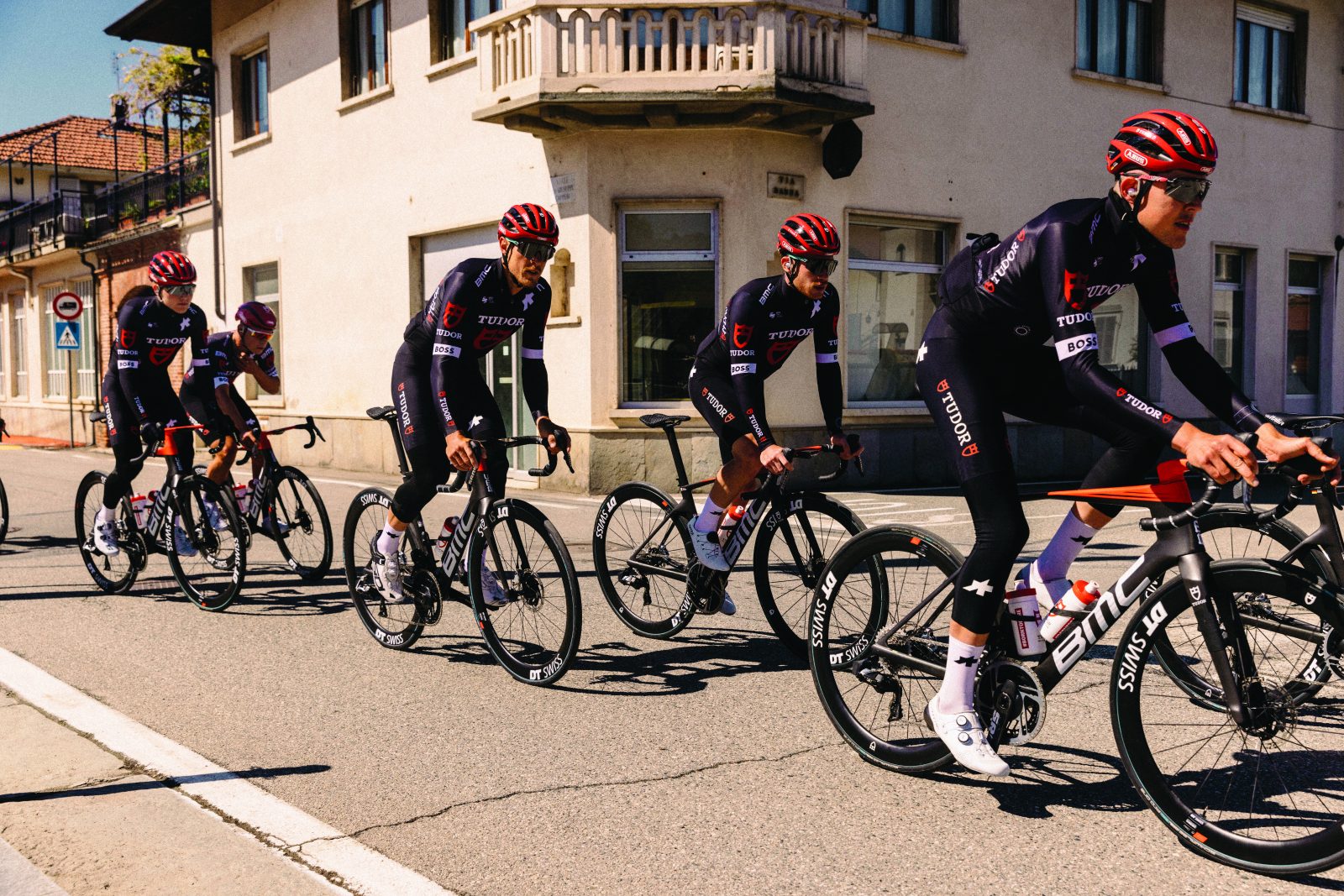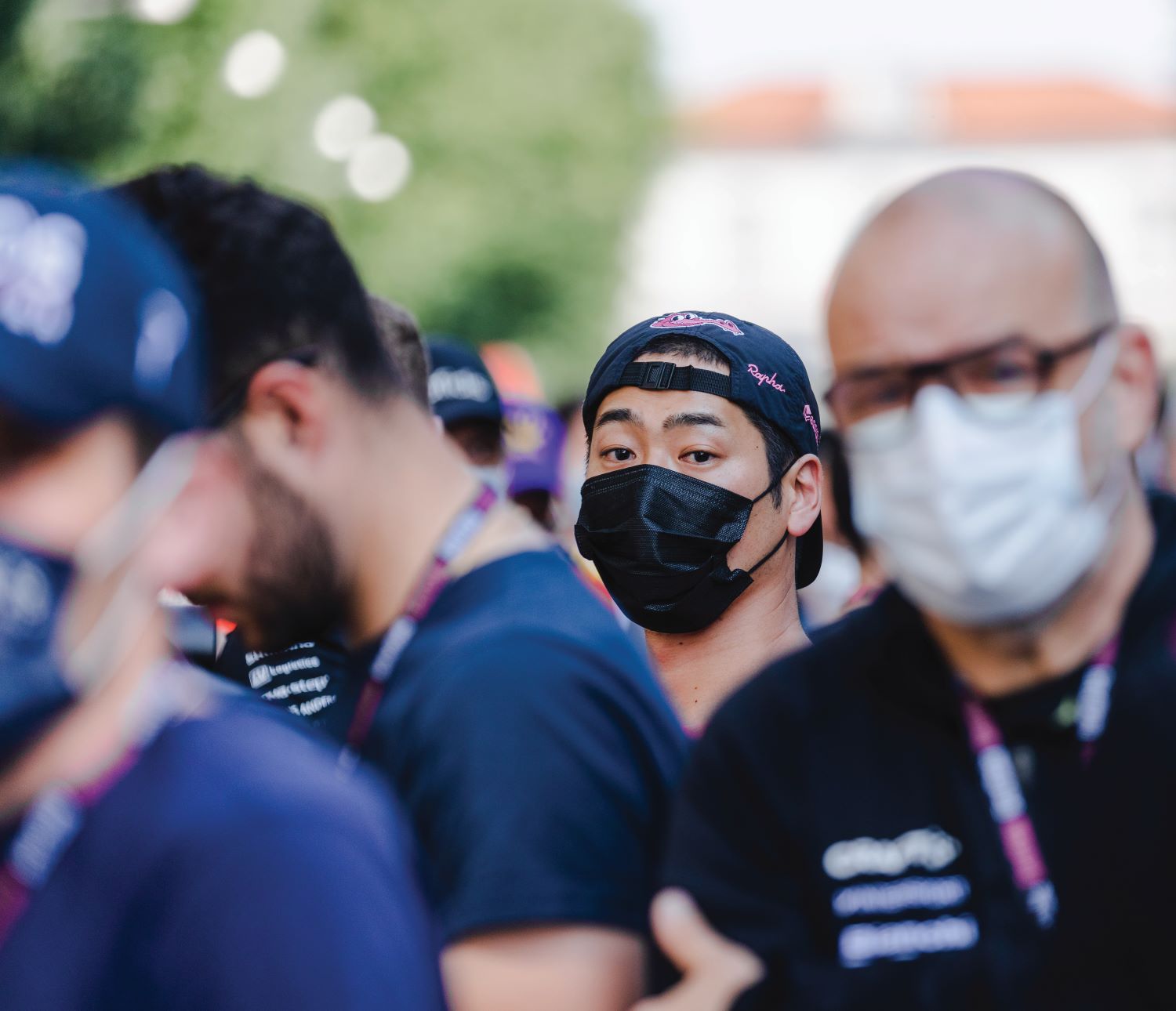You only need to look at the whippet-like pros to realise that thin equals fast. But when it comes to shedding weight, there’s a right and a wrong way to go about it
Chuck a bidon over your shoulder in any peloton and you’ll hit a rider who feels they could do with losing a few pounds. If you don’t, it means you’ve been dropped and could probably do with losing a few yourself. Whether pro or amateur, cycling’s obsession with weight is understandable. Power-to-weight is the sport’s most important metric and the lighter a rider can be without reducing their ability to generate power, the better they’ll perform. As a (very general) rule of thumb, most pro riders carry no more than 1kg of body weight per 2.5cm of height. You can calculate your own magic number but, believe us, it can be depressing.
‘Simply put, being lighter helps riders go up hills faster,’ says Ric Stern, performance director and senior coach at RST Sport Solutions. ‘Carrying less weight means less power and less mechanical effort are required to travel at the same speed.’ And when you crunch the numbers it soon becomes apparent how even the slightest loss of lard can improve performance.
‘If you take a 70kg rider, adding 10kg for bike, clothes and sundries, going up an 8% slope at 14.4km/h, they’ll need 277 watts of power,’ says Stern. ‘If they were to lose 2kg, at the same speed they’d require seven watts less, or conversely they can go at 14.7km/h. With a race such as the Etape, that 2kg is going to make a big difference over a long mountain pass.’
Put another way, 2kg of body weight on the Alpe d’Huez ascent is equivalent to a saving of roughly 1min 10secs, so losing that 2kg is going to shave serious time off any long climb. Plus, because Lycra is so unforgiving, you’ll also look better while you do it.

Loss leaders
As anyone who has ever embarked on an eating plan knows, losing weight is a lot tougher than it’s made out to be, especially if you’re also training regularly.
‘When we talk about losing weight we’re really talking about losing fat mass,’ says Nigel Mitchell, nutritionist to Team GB and Sky. ‘Losing muscle can have a negative effect on performance as that’s obviously associated with the production of power. Most people are probably not in danger of going too lean, so being as scientific as the pros probably isn’t necessary. At Sky we have to ensure we’re not pushing the riders too far on the low-body-fat front.’
Surely the best way to lose weight is just to overhaul what you eat and go on a crash diet, right? Wrong. ‘If you eat too little you might find you don’t have enough energy to actually go riding,’ says Stern. ‘Therefore the quality of your training drops and you don’t burn off as many calories. Paradoxically, people who train an awful lot tend to lose more weight by slightly increasing how much they eat so that they have the energy to train harder.’
That’s not to say you can stuff your face with whatever you want as soon as you get off the bike. ‘After exercise you’re looking for something with a fair amount of carbs in it for glycogen replenishment and a little bit of protein for muscle rebuilding – which isn’t chocolate cake,’ says Stern. ‘The amount of races I’ve been to where I’ve seen riders scoffing cakes and thinking they can get away with it… nutritionally they’re just rubbish and a lot higher in calories than people think.’
‘To lose weight you have to consistently be in a negative energy balance, so even if you’ve been riding for five or six hours, it’s not a licence to eat what you like,’ says Mayur Ranchordas, senior lecturer in sport and exercise nutrition and physiology at Sheffield Hallam University and nutritionist for Rapha Condor JLT. ‘We’re quite strategic with the Rapha guys, so if we have a rider who wants to lose some weight but still has to train hard, we’ll look at the timing of their carb intake to ensure they still restock their glycogen stores while cutting
some body fat by reducing their meal sizes.’
Too much, too soon
‘A common mistake riders make when trying to lose weight is cutting down too far, too fast,’ says Mitchell. ‘This leaves them feeling depleted and empty, which
will often make them crack.’
One of the most dramatic weight loss transformations that Mitchell was involved with was turning Bradley Wiggins from a podgy (!) 82kg track cyclist to a svelte 71kg road racer, but as with his form it didn’t happen overnight. ‘Even when he’s not at his Grand Tour weight, Brad is very lean, so he didn’t have to do any real rapid weight loss. It was just about managing his diet around
his training and cutting down gradually,’ says Mitchell.
Over a period of nine months Wiggins went gluten-free, stopped having sugar in his coffee, increased the lengths of his training rides and even did some of them in a fasted state to get his metabolism to work differently [see panel, left]. ‘He had to be careful because if he cut down too far then it would affect the quality of his training and, again, we didn’t want to push it so far that the drop in his muscle mass affected his performance. Now he really knows how to strike that balance,’ says Mitchell.
For those of us who don’t have the reported 4% body fat that Sir Wiggo paraded down the Champs-Élysées last year, how do we go about making those club run climbs just a little bit easier? Well, the recommended guideline for weight loss is around half a kilo a week, which is equivalent to a daily 500 calorie deficit. ‘You don’t necessarily have to cut your food completely to
lose those calories,’ says Stern. ‘For example, you can cut 200 calories from your diet and lose the rest by increasing your training to the equivalent.’
One way to do that is to mix up the type of training you’re doing. ‘If you do the same thing too often your body adapts and you stop getting any calorie-burning benefit from it,’ says Anthony Purcell, a strength and conditioning coach who works with pro cyclists on improving their performance. ‘To avoid plateauing in this way, mix high-intensity activity on the bike – 40 minute sessions of five minutes flat-out and three minutes recovery – combined with longer steady-state rides of two hours plus. And if you’ve got a gym membership, chuck in some strength and conditioning work to increase your lean muscle mass.’ Be mindful of rep ranges, though, as too much muscle without the required power can be just as bad as carrying too much lard.
‘If you were lifting big weights, there’s a danger the increased muscle mass could be counterproductive to cycling. So keep the reps high, keep rest between sets short and the weights to about 65% of your one-rep maximum – that will build your strength and power rather than muscle size. And for these short, sharp workouts, just stick with water while training. Don’t bother with sports drinks as they’re just added calories you don’t need, and the first rule of weight loss is controlling your sugar intake.’
Sunday ride supplements
Ah, the ‘S’ word. Cyclists have a conflicted relationship with sugar, because while we know it’s bad for the gut, all those multi-coloured drinks, bars and gels that we eat on the bike can be a godsend when out on a long ride.
‘They definitely work and they’re very useful for racing,’ says Stern, ‘but you don’t need to be eating them every 10 minutes on a regular training ride. Apart from anything, they’re awful for your teeth. If you’re riding for over an hour and a half, take one with you for insurance, just in case you blow, but otherwise a banana will do just as well.’
If cakes, gels and bars are off the menu, what should we be eating? ‘Foods low on the glycaemic index [GI] such as oats, basmati rice, and quinoa,’ says Mitchell. ‘They’re absorbed by the body slowly and don’t cause spikes in your blood sugar. If your blood sugar is really high all the time, the body will release more of the metabolic hormone insulin which, among many things, controls the storage of fat.’ Your body will react to an increase in insulin by storing carbs as fat rather than use it for fuel.
That said, you can’t simply go all-out Atkins and banish carbs from your diet in an attempt to speed-shrink before an event. ‘Your body naturally has a demand for carbs and if you cut it back too far, it will turn to your lean muscle to get what it needs. You can protect your muscle mass when you’re cutting down your portion sizes by increasing the amount of protein – dairy is really good for this – but if you want to maintain performance, cutting carbs completely isn’t the way to go about it.’
And for those of us slightly heavier riders who maintain that what we lose going up the hills we regain on the way down, well, sadly, that’s not true either. ‘If you’re a shorter person then your lower centre of gravity might help,’ says Stern. ‘But arguably your weight doesn’t matter when descending. The truth is, if you lost some weight you’d be an all-round better rider.’
Weight of experience
Advice from the experts on losing weight without losing power
- Stay fuelled
‘Ensure you’re still fuelling adequately,’ says Team Sky’s Nigel Mitchell. ‘Otherwise you won’t get what you need to train efficiently. Our riders work on getting 20-40g of carbs per hour when on the bike. If you’re going out for an hour and a half, nice and steady, you’ll probably only need a banana, but if you’re riding flat out for four hours you’ll need
40g of carbs per hour.’ - Mix it up
‘Your body needs to be constantly shocked for any significant changes to occur,’ says strength coach Anthony Purcell. ‘If you don’t vary your training and continually do the same types of exercise, your body will plateau. Mix up long rides with short intervals and, if you have time, strength and conditioning work.’ - Ride on empty
Training occasionally in a fasted state can increase the amount of fat burnt during a session. ‘Train first thing in the morning before breakfast,’ says Mayur Ranchordas, nutritionist for Rapha Condor JLT. ‘You can take some caffeine – green tea is good – to help release fatty acids into your bloodstream and in the absence of any carbs your body will turn to these for fuel.’ While a pro will do this maybe twice a week, one morning ride a week for the rest of us should reap benefits - Don’t starve
‘If you suddenly stop eating tomorrow, you’ll lose muscle as well as
fat,’ says performance coach Ric Stern. ‘If you manage your weight loss carefully, you should find that you don’t have an issue, because any loss in power will be offset by the weight you’ve lost. And remember, you don’t necessarily have to cut your food to lose those calories – you can always lose a certain number of calories through diet and increase the length or intensity of your training for the rest.’
Lighten your load
Team Sky nutrionist Nigel Mitchell outlines strategies for eating to lose wight without hampering your performance on the bike
When it comes to diet, there’s no one-size-fits-all’ approach. ‘Diet is a component of training, so it should reflect what you’re doing on the bike,’ says Mitchell. ‘The timing and frequency of meals are important because a common mistake is going too long without eating, craving foods and then over-feeding.
‘The riders I work with tend to eat six or seven small meals a day. Breakfast-wise, porridge is really good – a lot of oats get eaten at Sky! That will be followed by a mid-morning glass of milk or a skinny latte with a piece of fruit to keep the blood sugar up. A baked potato with chilli, tuna or cheese, and salad makes a good, balanced lunch. If training is particularly intense, we’ll have a mid-afternoon snack of yoghurt with a piece of flapjack, followed later by dinner, which will include 150-200g of fish, chicken or steak with basmati rice or quinoa and vegetables. A snack before bed such as a bowl of cereal or some cottage cheese keeps muscles fed while sleeping.
‘On days when training is not so intense, portion sizes should be reduced. One of the things that can help people with this is monitoring how much they eat. Keeping a food diary helps to reflect on what they eat and shows where trigger points for overeating or eating the wrong things are. I’ve been involved in a free online weight management programme for men [livsmarter.co.uk], which is suitable for the average cyclist. It lets you see how many calories you’re consuming and burning.’


